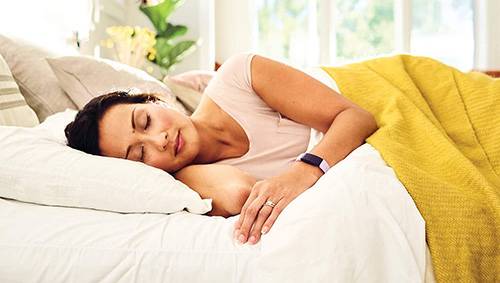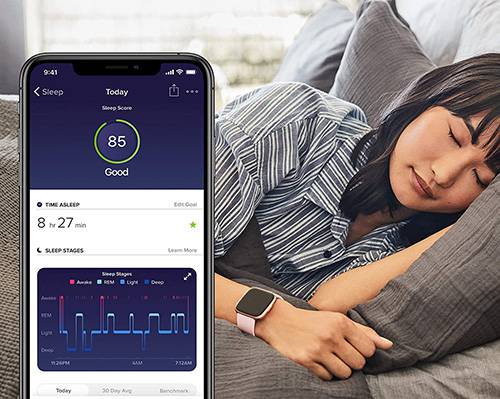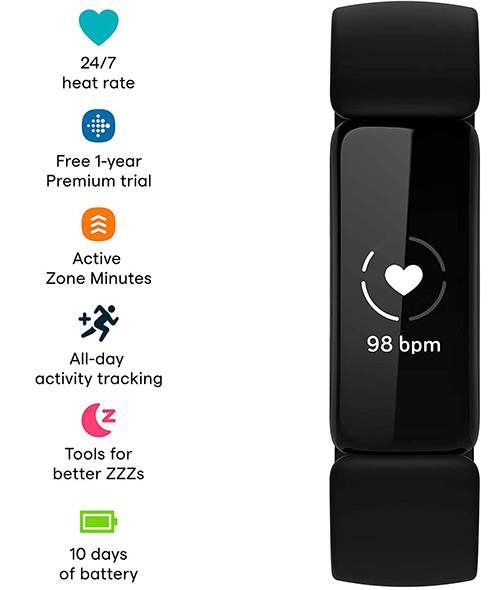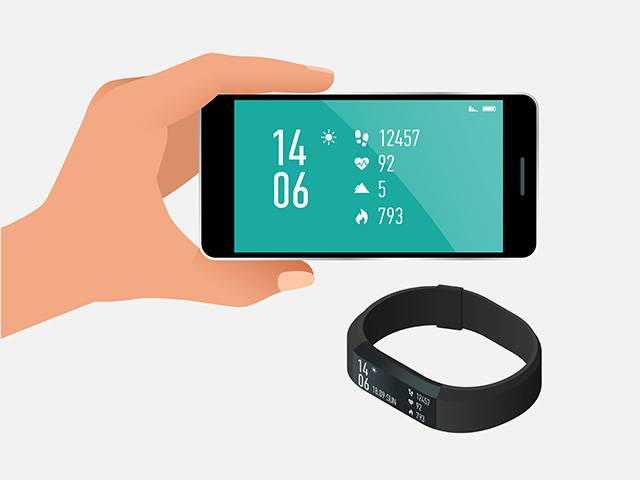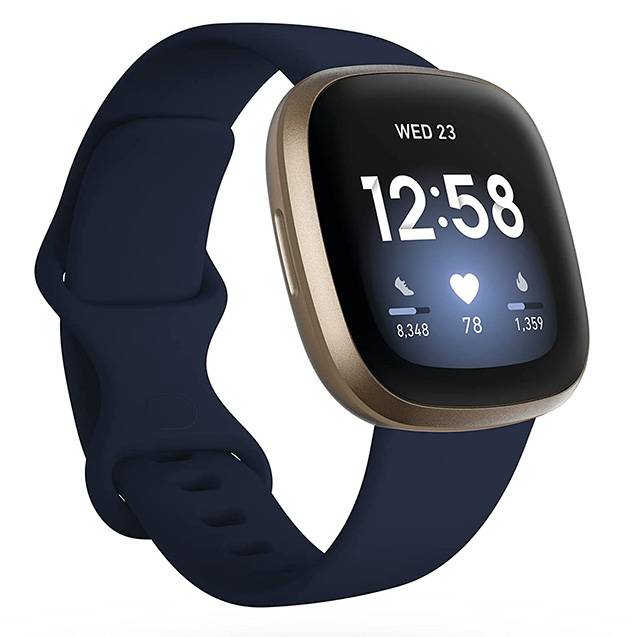Fitbit is well-reputed for its array of advanced smartwatches and fitness tracking devices, but you may be wondering how its sleep tracking functions work. Can a smartwatch/fitness tracker really determine how long you’ve been asleep—let alone how much time you spent in REM sleep vs. light sleep vs. deep sleep?
Well, yes!
While Fitbit trackers are not as accurate as an EEG (electroencephalogram), for instance, they can provide great insight into your sleep patterns. You may find a Fitbit sleep tracker useful if you’re concerned about your length or quality of sleep, or if you’re just curious how many ZZZs you’re really catching per night.
In this article, we’ll briefly describe how Fitbit devices track your sleep* as well as what kind of information you can expect to receive the next morning.
Let’s dive in, shall we?
*Note: The methods used for tracking sleep vary between older and newer models of Fitbit products. For the sake of this article, we’ll focus on the newer models.
How the Fitbit Tracks Sleep
There are two factors that Fitbit trackers take into account when monitoring your sleep:
- Your movement
- Your heartrate patterns
Let’s take a closer look.
— Movement
The Fitbit registers when you stop moving or when your activity level significantly decreases. After about an hour of inactivity on your part, the Fitbit will determine that you’re asleep, and begin to monitor your sleep patterns and track any further movements (such as rolling over). In fact, the device uses these movements to determine whether or not you’re really asleep—actions like rolling over or changing positions happen frequently during the night, so it’s a good indicator that you’re not just lying still.
It will then use this data to help determine how much and how well you slept during the night.
— Heart Rate
First, some context. There are four stages of sleep, which we cycle through a few times per night:
- Stage 1 (Non-REM): This is when you’re first drifting off to sleep. It’s characterized by a decrease in heart rate and a slowing down of brainwaves.
- Stage 2 (Non-REM): In the second stage, your heart rate decreases even further, your brainwaves continue to slow, and you experience a drop in body temperature.
- Stage 3 (Non-REM): This is often called “deep sleep,” as this is when your heart rate and brain waves are at their lowest point. You also experience a drop in blood pressure and your body is most relaxed at this point. People find it most difficult to wake up during this stage of sleep.
- Stage 4 (REM): This is often called the “dream stage,” as this is when dreaming occurs. Your heart rate and brain waves speed up again at this stage; it’s the lightest stage of sleep and the one you typically wake up during.
Most of the newer Fitbit models have the ability to track your heart rate both during the day and at night while you sleep. It can determine the following factors based on the way your heart rate changes throughout the stages of sleep (a factor called HRV, or Heart Rate Variability):
- How long you slept in total
- How long you were awake in total
- How long you spent in each stage of sleep
Do keep in mind that you must have been asleep for at least three hours in order for the Fitbit to actually track your sleep.
Checking Your Stats
Upon waking from your slumber in the morning, you can check your sleep results from that night by either:
- checking out the Sleep tile under the Fitbit Today tab on the actual Fitbit device.
- syncing your Fitbit with another device (like a phone or Windows 10 computer) and checking through the app.
You can read instructions on how to sync devices and check your stats on the official Fitbit website.
As mentioned earlier, your Fitbit tracks 1) your total sleep time, 2) your total wake time during the sleep period, and 3) how long you spent in each stage of sleep. The information is displayed in a clean, easy-to-understand format, and Fitbit may even offer you tips on how to get a better night’s sleep based on your results.
To get even more insight into your sleep patterns and habits, you can compare your results to those from previous nights as well as the average results of other people in your age/sex group. This will show you whether your own sleep patterns are consistent and whether they align with those of others.
Most Recent Devices with Both Heart Rate and Sleep Tracking
When it comes to sleep monitoring via a Fitbit device, you should choose a model that offers both heart rate tracking and sleep tracking for the best results.
Fitbit is constantly coming out with brand-new gadgets (and upgrades to existing gadgets), so we’ve done some research to find some of the best available Fitbit devices that offer both functionalities:
- Fitbit Sense
- Versa 3
- Versa 2
- Fitbit Luxe
- Inspire 2
- Charge 4
You can also find older models with these features, but the newer ones will offer more accurate results and additional features. In addition, you can find Fitbit models that offer sleep-tracking without heart rate monitoring, but these tend to be less accurate.
Conclusion
You should now have a better understanding of how Fitbit can effectively track your sleep and how to access your results each morning.
If you’re struggling to sleep at night or wonder why you’re feeling so unrested in the morning, a simple and affordable solution like a sleep- and heart rate-tracking Fitbit device can give you insight into what your sleep patterns really look like. While fitness trackers are not as apt at tracking sleep as, say, an EEG, they can still be a good starting point toward getting better sleep each night.
Let us know in the comments if you still have any questions or concerns on the topic, or if you have a sleep-tracking device/app you think we should know about. We look forward to hearing from you, and until next time, here’s to modern fitness technology!
Photo credit: Golden Sikorka/Shutterstock
